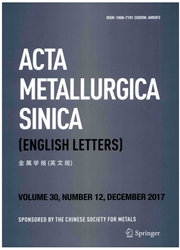

 中文摘要:
中文摘要:
在这篇论文,一个仿生的方法被介绍改进离心的扇子的片的侵蚀抵抗。47210C 的标准、仿生的配置片上的稳固的粒子侵蚀的数字调查离心的扇子被介绍。数字学习采用计算液体动力学(CFD ) 软件基于一个有限的卷方法,在哪个分离阶段模型习惯于 modele 稳固的粒子流动,和 Eulerian 保存方程是采用模仿连续阶段。而且,自定义功能被用来定义穿方程。粒子的各种各样的直径被考虑。标准、仿生的扇子片的碰撞的位置被讨论,并且二种离心的扇子片穿被比较。结果证明从有不同位置的事件来源的粒子有转弯和运动的不同过程什么时候进入 impeller。在扇子隧道的流动的轨道为有不同直径的粒子是显著地不同的。仿生的扇子片当粒子尺寸是 20 楮杮?时,让更低的侵蚀比标准扇子片评价???????????????????????湍???????????????????????????????
 英文摘要:
英文摘要:
In this paper, a bionic method was presented to improve the erosion resistance of blade of the centrifugal fan. A numerical investigation of the solid particle erosion on the standard and bionic configuration blade of 4-72N_o10C centrifugal fan was presented. The numerical study employs computational fluid dynamics (CFD) software, based on a finite volume method, in which the discrete phase model was used to modele the solid particles flow, and the Eulerian conservation equation was adopt to simulate the continuous phase. Moreover, user-defined function was used to define wear equation. The various diameters of the particles were taken into account. The positions of collision of standard and bionic fan blades were discussed, and two kinds of centrifugal fan blade wear were compared. The results show that the particles from the incident source with different positions have different processes of turning and movement when enter into the impeller. The trajectories of flow in the fan channel are significantly different for the particles with different diameters. Bionic fan blade have lower erosion rate than the standard fan blade when the particle size is 20 μm. The anti-erosion mechanism of the bionic fan blade was discussed.
 同期刊论文项目
同期刊论文项目
 同项目期刊论文
同项目期刊论文
 期刊信息
期刊信息
